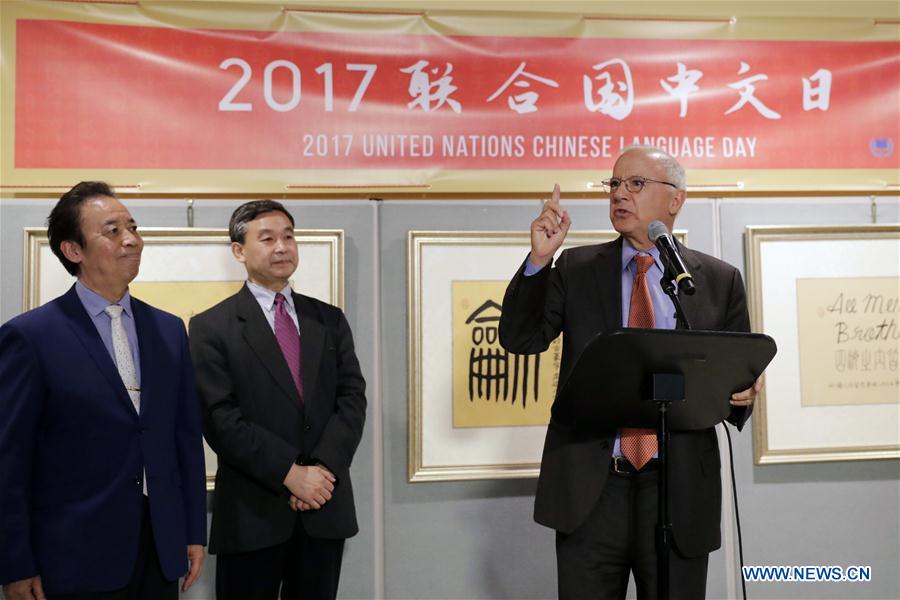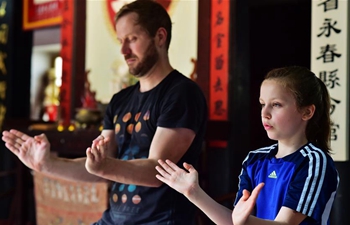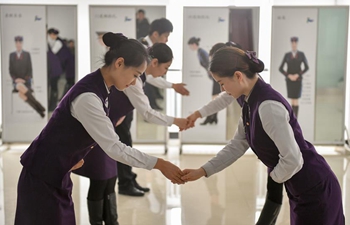
Stephen A. Orlins (1st R), president of the National Committee on U.S.-China Relations, delivers a speech during an event to celebrate the UN Chinese Language Day at the UN headquarters in New York, on April 20, 2017. The UN Chinese Language Day has been observed annually on April 20 since 2010 to celebrate the language's overall contribution to the world and encourage more people to take it up. (Xinhua/Li Muzi)
UNITED NATIONS, April 20 (Xinhua) -- "If you can speak Chinese and can write Chinese characters, you can get to know China better," Stephen A. Orlins, an expert on U.S.-China Relations, said on Thursday night.
Joining a crowd of UN staff members celebrating the Chinese Language Day, Orlins, president of the National Committee on U.S.-China Relations, made the remarks in Chinese here at the UN headquarters.
The UN Chinese Language Day has been observed annually on April 20 since 2010 to celebrate the language's overall contribution to the world and encourage more people to take it up.
This year's celebration includes a calligraphy exhibition by Pang Zhonghua, a well-known pioneer of hard nib calligraphy in China, martial art performances and a showcase of cultural customs of the Qiang ethnic group mainly living in China's southwestern province of Sichuan.
The event also provided UN staff members with an opportunity to try writing Chinese calligraphy with the traditional brush, ink, and paper.
Martijn Dalhuijsen, a UN staff member who has been learning Chinese for four years, wrote the two characters of the word "China" on a piece of Xuan paper, a kind of specially made soft paper used for painting and calligraphy.
Dalhuijsen, who is from the Netherlands, told Xinhua that he has learnt traditional Chinese calligraphy through the UN's Chinese language program. During this process, he has gained a better understanding of the Chinese culture.
Dalhuijsen recalled that at the very beginning of learning calligraphy, he rushed to try writing with the brush and ink, but his teacher taught him to calm down and meditate for a while before starting to write.
With "peace in heart," the characters can be written more beautifully, said Dalhuijsen.
"Once I learnt how to write it in the stroke order, I have learnt much better to appreciate both the meaning and the etymology of the characters," he added.
The chosen date for the Chinese Language Day also is related to a legend of Chinese characters.
Every year, the celebration is held roughly at the same time in April around Guyu, which literally means "rain of millet," referring to the sixth of the 24 solar terms created by ancient Chinese to carry out agricultural activities.
Chinese people celebrate Guyu in honor of Cang Jie, a mythical figure who is presumed to have invented Chinese characters about 5,000 years ago.
Legend has it that when Cang Jie created characters, the deities and ghosts cried and it rained millets.
Nowadays, the Chinese language is the most spoken language around the world. More than 1 billion people speak it as mother tongue, which means one in six people in the world communicates using Chinese.















